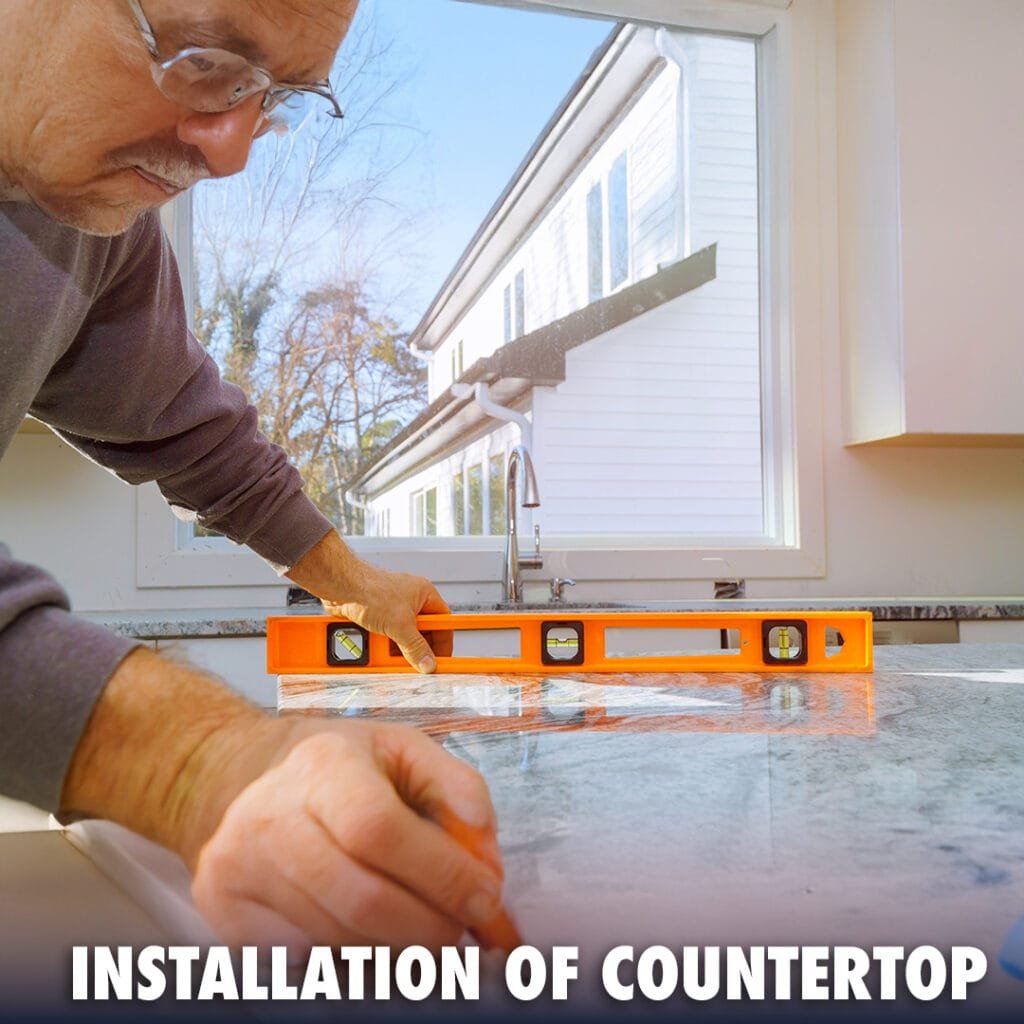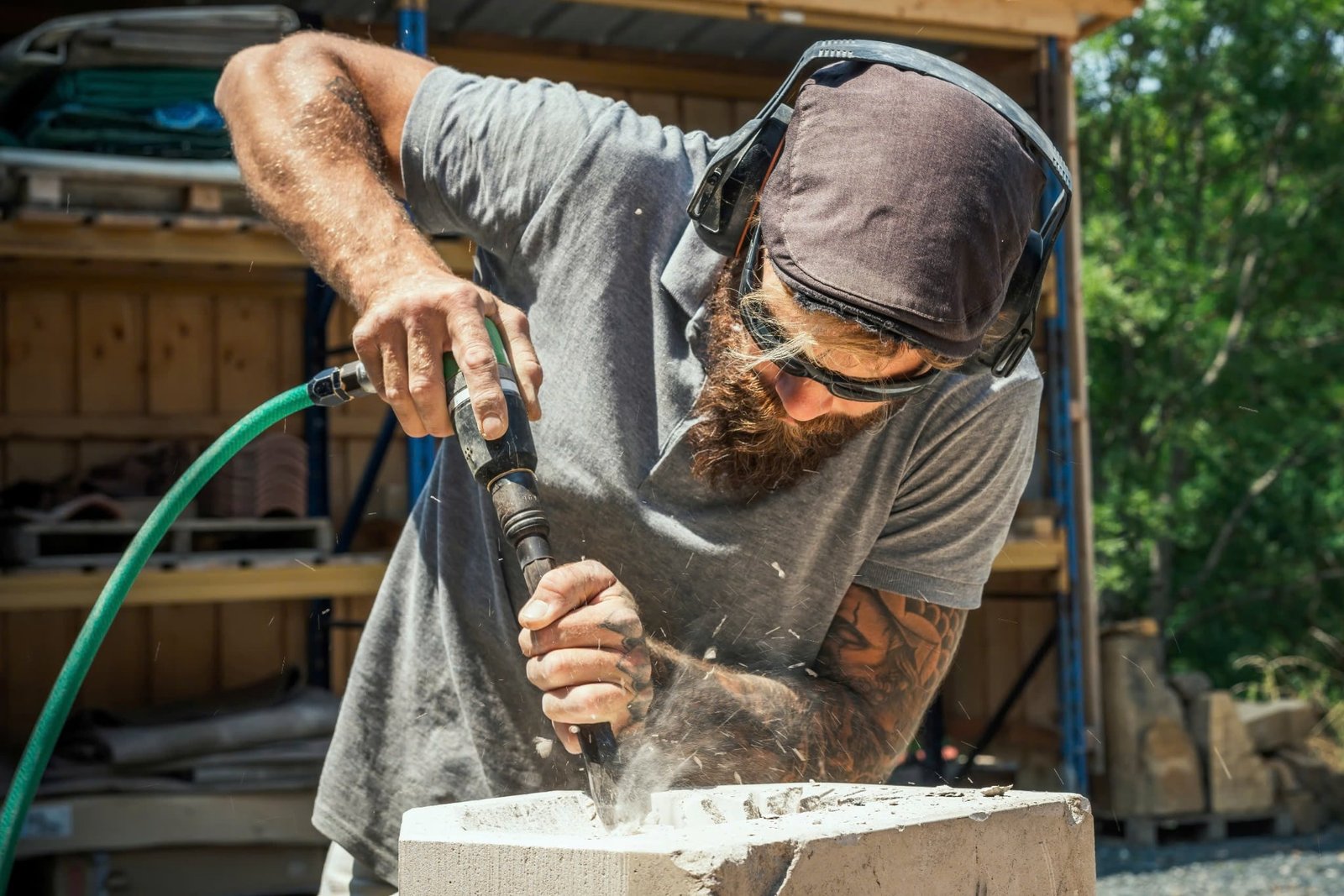
Preparing an installation of countertop is a critical process that can transform your kitchen, bathroom, or commercial space into a functional and beautiful area
Preparing an installation of countertop is a critical process that can transform your kitchen, bathroom, or commercial space into a functional and beautiful area. Whether you’re planning a residential upgrade or a commercial renovation, understanding the detailed process of countertop installation is essential for ensuring that your new surface meets your design, durability, and budget expectations.
In this comprehensive guide, we will cover every aspect of countertop installation—from planning and design to material selection, preparation, and the final installation steps. We’ll explore best practices, tools, and techniques that guarantee a successful project and help you avoid common pitfalls. Let’s dive into the world of countertop installations and discover how to prepare for a flawless installation of countertop.

Introduction to Countertop Installation
What is Countertop Installation?
Countertop installation refers to the process of setting up a new countertop in a designated area, whether it’s a kitchen, bathroom, or workspace. This process involves several steps, including measuring the space, selecting materials, creating a template, cutting the countertop material, finishing the edges, and finally, securely installing the countertop.
Countertop installations are an essential part of home and commercial renovations because they not only provide a durable, functional surface but also significantly enhance the aesthetic appeal of the space. The proper installation of countertop ensures that the surface is level, properly sealed, and resistant to daily wear and tear.
Why is Preparation Key?
Proper preparation is the backbone of a successful countertop installation. Without careful planning and execution, even high-quality materials can result in a poorly fitted or damaged countertop. Preparation involves:
- Accurate Measurements: Ensuring the countertop fits perfectly in the space.
- Surface Evaluation: Checking the underlying structure for stability and readiness.
- Material Selection: Choosing the right type of stone, laminate, or engineered material.
- Template Creation: Developing a precise template for cutting and fitting.
- Tool and Equipment Readiness: Ensuring all necessary tools and safety equipment are available.
By thoroughly preparing each step, you minimize the risks of misalignment, structural issues, and costly rework. For more details on how to execute these steps flawlessly, consider exploring our resource on granite countertop installation.
Planning Your Countertop Installation
Detailed Planning and Assessment
Before any physical work begins, it’s essential to engage in a detailed planning process. This phase sets the foundation for all subsequent steps and ensures that every aspect of the project is aligned with your goals.
Space Evaluation and Measurements
Accurate measurements are the first critical step in the installation of countertop. Begin by:
- Measuring the length, width, and depth of the area where the countertop will be installed.
- Noting the position of sinks, appliances, and any other fixtures that will affect the layout.
- Evaluating the surrounding structure, including cabinets, walls, and flooring, to ensure they are level and secure.
A professional installer often creates a detailed drawing or blueprint of the space to visualize the final product. This blueprint serves as a guide during the template creation and cutting stages.
Material Selection
Choosing the right material is crucial for both aesthetics and durability. There are several options available:
- Natural Stone: Granite is a popular choice due to its natural beauty, strength, and heat resistance.
- Engineered Stone: Materials like quartz offer consistent patterns and colors with added durability.
- Laminate: A cost-effective option that comes in various designs and finishes.
- Solid Surface: These offer a seamless look and are non-porous, making them easy to maintain.
When selecting your material, consider factors such as usage, maintenance, and the overall design of your space. The material you choose will influence every step of the process, from cutting and finishing to the final installation. For additional insights on material options and the nuances of installation, check out our guide on countertop installation.
Preparing the Installation Area
Surface Preparation and Structural Assessment
A well-prepared installation area is essential for the long-term durability and functionality of your countertop.
Assessing the Substrate
Before installation, it’s important to assess the substrate or the underlying surface where the countertop will be placed. This includes:
- Checking for Levelness: Ensure that the base (often cabinets or a solid surface) is level and free from defects.
- Strength and Stability: Verify that the underlying structure can support the weight of the new countertop, especially when using heavy materials like granite.
- Surface Cleanliness: Clean the area thoroughly to remove dust, grease, or any debris that might affect the adhesion or alignment of the countertop.
Addressing Repairs and Reinforcements
If the substrate is found to be uneven or damaged, repairs must be made prior to installation. This might involve:
- Leveling the surface with shims or additional supports.
- Replacing damaged sections or reinforcing weak areas.
- Ensuring that all edges are smooth and secure to avoid any gaps once the countertop is installed.
Proper preparation of the substrate not only ensures a smooth installation process but also contributes to the longevity and functionality of your countertop.
Template Creation and Cutting the Countertop
Creating an Accurate Template
A template is an exact representation of the installation area and serves as a guide for cutting the countertop to the precise dimensions required.
Template Materials and Tools
Templates are typically made from materials like cardboard, foam board, or plywood. The process involves:
- Laying out the measurements on the template material.
- Marking the positions of sinks, cooktops, and other fixtures.
- Cutting out the template to match the exact shape of the installation area.
A well-made template is crucial for the next steps, as it ensures that the countertop will fit perfectly into your space with minimal adjustments.
Transferring the Template to the Material
Once the template is finalized, it must be transferred to the chosen countertop material. This involves:
- Placing the template on the material slab.
- Tracing the outline carefully to ensure accuracy.
- Using the traced lines as guides for cutting the material.
This step is critical, as any inaccuracies in the template will result in a countertop that does not fit correctly, leading to wasted material and additional costs.
Cutting and Finishing the Countertop
Precision Cutting Techniques
After the template has been transferred, the next step is to cut the countertop material. This is a crucial phase where precision is key.
Tools for Cutting
Modern countertop installation often employs advanced tools to ensure precision, such as:
- CNC Routers: Computer-controlled machines that can execute precise cuts based on digital templates.
- Water Jets: Used especially for natural stone like granite, water jets provide clean, accurate cuts without generating excessive heat.
- Diamond Blade Saws: Commonly used for cutting through hard materials with precision and minimal waste.
These tools allow for a clean and precise cut, ensuring that the final countertop matches the dimensions of the installation area perfectly.
Edge Profiling and Polishing
After cutting, the edges of the countertop are refined and finished:
- Edge Profiling: The edges are shaped to the desired profile, which can range from simple square edges to more decorative designs.
- Polishing: The surface and edges are polished to a high gloss, enhancing the natural beauty of the material and providing a smooth, durable finish.
A high-quality finish not only improves the appearance but also protects the countertop from everyday wear and tear.
For more insights on cutting and finishing techniques, check out our detailed guide on granite countertop installation.
Installation of the Countertop
Final Installation Process
With the countertop cut, finished, and prepared, the final step is the installation itself. This phase requires careful handling to ensure that the countertop is securely fitted and aligned with the installation area.
H3: Preparing for Installation
Before the countertop is installed, make sure that:
- The substrate is fully prepared and level.
- All necessary supports and reinforcements are in place.
- The installation area is clean and free from debris.
Placing and Securing the Countertop
The installation process typically involves:
- Carefully lifting the countertop into place.
- Aligning it with the template and existing fixtures.
- Securing the countertop using appropriate adhesives, screws, or brackets.
- Sealing the edges to protect against moisture and damage.
Precision during this phase is critical to prevent any movement or misalignment once the countertop is in use. Proper installation not only ensures a stable, long-lasting countertop but also enhances the overall appearance of the space.
For more detailed guidance on achieving a perfect fit, refer to our article on countertop installation.
Common Challenges and Solutions in Countertop Installation
Overcoming Installation Challenges
While a well-planned installation of countertop can be smooth, there are several common challenges that installers may face.
Measurement Errors
Even small measurement errors can lead to significant issues during installation. To mitigate this risk:
- Double-check all measurements.
- Use digital tools and laser measuring devices for higher accuracy.
- Create a detailed template and verify its accuracy before cutting the material.
Handling Heavy Materials
Countertop materials, especially granite, are extremely heavy. Ensuring safe handling requires:
- Using specialized lifting equipment.
- Employing proper lifting techniques.
- Having adequate manpower or machinery to support the weight of the countertop.
Adjustments and Fit Issues
Even with meticulous planning, some adjustments may be needed during installation:
- Allow for slight variations in material thickness.
- Make fine adjustments to ensure a snug, gap-free fit.
- Use flexible adhesives or sealants that can accommodate minor discrepancies.
Addressing these challenges proactively can save time and prevent costly rework, ensuring a seamless installation process.
Future Trends in Countertop Installation
Innovations and Technological Advances
The field of countertop installation is continuously evolving with new technologies and methods that improve both efficiency and quality.
Digital Templating and CNC Cutting
The use of digital templating and CNC cutting machines has revolutionized the installation of countertop by:
- Increasing accuracy in measurements and cuts.
- Reducing material waste.
- Shortening the overall installation time.
Sustainable Materials and Practices
There is a growing trend toward sustainable practices in countertop installations:
- Recycling waste materials generated during cutting.
- Using eco-friendly adhesives and sealants.
- Selecting natural and sustainable countertop materials that minimize environmental impact.
Enhanced Installation Techniques
Future innovations may include:
- Improved fastening systems that allow for easier adjustments.
- Advanced sealing technologies that provide longer-lasting protection.
- Integration of smart home technology to monitor the condition and maintenance needs of countertops.
Conclusion
The installation of countertop, whether for a kitchen, bathroom, or commercial space, is a multifaceted process that requires careful planning, precision, and expertise. From the initial consultation and accurate measurement to the detailed steps of template creation, cutting, and final installation, every phase plays a crucial role in the overall success of the project.
A well-executed countertop installation not only enhances the beauty and functionality of a space but also increases its value and durability. By investing time in thorough preparation and leveraging advanced tools and techniques, you can ensure that your new countertop will stand the test of time and meet your design expectations.
Whether you are opting for natural stone, engineered surfaces, or any other material, understanding the entire process—from design and planning to the final installation—is key to achieving outstanding results. For further insights on installation techniques and best practices, explore our resource on granite countertop installation and learn how to choose the right method for your project from our detailed guide on countertop installation.
By staying informed about the latest trends and innovations in the countertop installation industry, you can make educated decisions that not only improve the efficiency and safety of the process but also enhance the overall aesthetic appeal of your space. Embrace the advancements in technology and sustainable practices to achieve a flawless installation of countertop that reflects your unique style and meets your functional needs for years to come.

